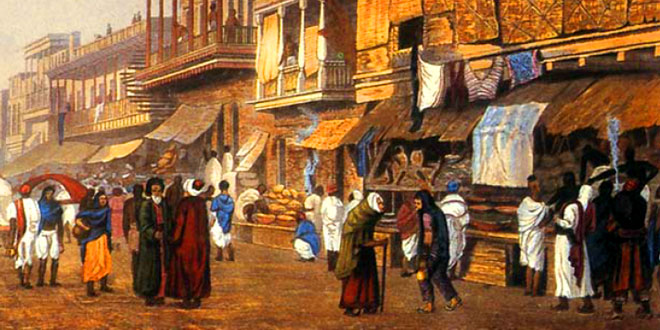Question: Write a brief note on the medieval period of Indian History. What two events mark the beginning and end of the period?
Answer: The word “medieval” comes from the Latin words medius and aevum, which means “middle age”. Therefore, when a period is called medieval it means that period which is in the middle of human history. Indian history is divided into three periods, Ancient period, Medieval period and Modern period. The medieval period in India is further divided into the early medieval period (647-1200 CE) and the later medieval period (1200-1700 CE). The medieval period in India saw far-reaching changes in all fields- political, social,cultural and economic.
The medieval period of Indian history is taken to extend from 647 to 1700 CE, i.e., It started with the death of Harshvardhana’s death in 647 CE and declined when the Mughal Empire started breaking up and the British began establishing their power in India in 1700 CE.
Question: Describe the effect of the physical features of the land on the history of India.
Answer: The effect of the physical features of the land on the history of India:
- The Himalayas have posed a barrier for many who have wanted to conquer this land. But the passes, or points along the ranges which are lower than the surrounding peaks, have allowed travellers and invaders to enter India through the north-west.
- The Northern Plains, comprising the basins of the rivers Indus and Ganga, was the seat of many great empires. This was also the region that was under constant threat from invaders.
- On the contrary, the Southern Peninsula faced fewer threats of invasion. The Vindhya and Satpura mountains ranges acted as a barrier, discouraging the southern movement of the Turks and the Mughals.
- The kingdoms in the south, which has long coastlines, like the Cholas and the Pandyas, developed strong navies.
Question: Explain with examples how inscription and coins serve as the history of the medieval India.
Answer: Inscription: Inscriptions are writings engraved on hard surfaces like metal, rock and stone. The study of inscriptions is called epigraphy. Inscriptions are an important source of information about India’s past. Inscriptions were initially made on the faces of cliffs, on stone pillars, inside caves and on rocks. In the course of time, they came to be engraved into metals-such as coins and copper plates.
For example- Tamil inscriptions written on the walls of Brihadeshwara Temple, 11th century CE.
Coins: Coins are pieces of metal that are used as money. They were usually issued by the ruler of a kingdom. The study of coins is called numismatics. The information gathered from coins tells us about the kingdom, confirms dates during which particular kings ruled, their special interests and achievements.
For example- Gold coin, called tanka, issued by Balban, 1266-1287 CE and silver coins issued by Mohammad bin Tughlaq, one of the most powerful rulers of medieval India, 1327 CE.
Question: Explain in detail how monuments and buildings are useful sources of information on medieval India.
Answer: Monuments and buildings often provide information about the period during which they were built. Temples, palaces and mosques can tell us not only of religious practices but also about the political, economic and social conditions of that time.
Mosques like the Jama Masjid in Delhi, forts like those at Delhi, Gwalior, Agra and Mandu and palaces like those in Jaipur, Jodhpur, Deeg and Hyderabad are studied by historians to understand the style of architecture followed at the time.
Question: How do books and other written manuscripts help us understand the history of medieval India? Give examples to support your answer.
Answer: Medieval manuscripts in India were mainly written on Palm leaf, cloth, Bamboo leaf, birch bark and paper. It deals with a wide variety of subjects, such as religion, philosophy, systems of science, arts and literature. They are composed in different Indian languages and scripts. For example- Annals and Antiquities of Rajasthan by Colonel Todd, Rajatarangini by Kalhana, Bilhana describes the achievements of King Athirajendra Chola.
 Class Notes NCERT Solutions for CBSE Students
Class Notes NCERT Solutions for CBSE Students



Best thing good job please publish it to play store also
Thanks for answer! Good job. It made me find answers so easily, thanks for publishing answer. I am very thankful to you guys. Thanks a lot!